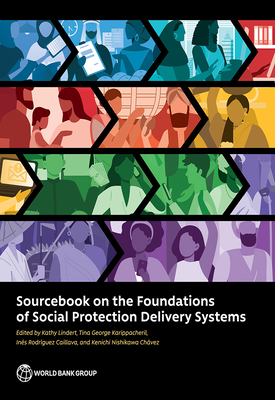
Sourcebook on the Foundations of Social Protection Delivery Systems
Description
The Sourcebook on the Foundations of Social Protection Delivery Systems synthesizes real-world experiences and lessons learned of social protection delivery systems from around the globe. It takes a broad view of social protection, covering various intended populations such as poor or low-income families, unemployed workers, persons with disabilities, and individuals facing social risks. It discusses many types of interventions that governments provide to individuals, families, or households, including categorical programs, poverty-targeted programs, labor benefits and services, disability benefits and services, and social services.
The Sourcebook seeks to address concrete “how-to” questions, including:
•How do countries deliver social protection benefits and services?
•How do they do so effectively and efficiently?
•How do they ensure dynamic inclusion, especially for the most vulnerable and needy?
•How do they promote better coordination and integration—not only among social protection programs but also among programs in other parts of government?
•How can they meet the needs of their intended populations and provide a better client experience?
The delivery systems framework elaborates on the key elements of that operating environment. The framework is anchored in core implementation phases along the delivery chain. Key actors, including people and institutions, interact all along that delivery chain. Those interactions are facilitated by communications, information systems, and technology. This framework can apply to the delivery of one or many programs and to the delivery of adaptive social protection.
The Sourcebook structures itself around eight key principles that can frame the delivery systems mind-set:
1. There is no single blueprint for delivery systems, but there are commonalities, and those common elements constitute the core of the delivery systems framework.
2. Quality of implementation matters, and weaknesses in any of the core elements will negatively affect the entire system, reducing the impacts of the program(s) they support.
3. Delivery systems evolve over time, in a nonlinear fashion, and their starting points matter.
4. Efforts should be made to “keep it simple” and to “do simple well,” from the start.
5. The “first mile”—people’s direct interface with administrative functions—is often the weakest link in the delivery chain; improving it may take systemic change but will greatly improve overall efficiencies and mitigate the risk of failures on the frontlines.
6. Social protection programs do not operate in a vacuum, and thus their delivery systems should not be developed in silos; synergies across institutions and information systems are possible and can improve program outcomes.
7. Social protection delivery systems can contribute more broadly to government’s ability to serve other sectors, such as health insurance subsidies, scholarships, social energy tariffs, housing benefits, and legal services.
8. The dual challenges of inclusion and coordination are pervasive and perennial and encourage the continuous improvement of delivery systems, through a dynamic, integrated, and human-centered approach.



